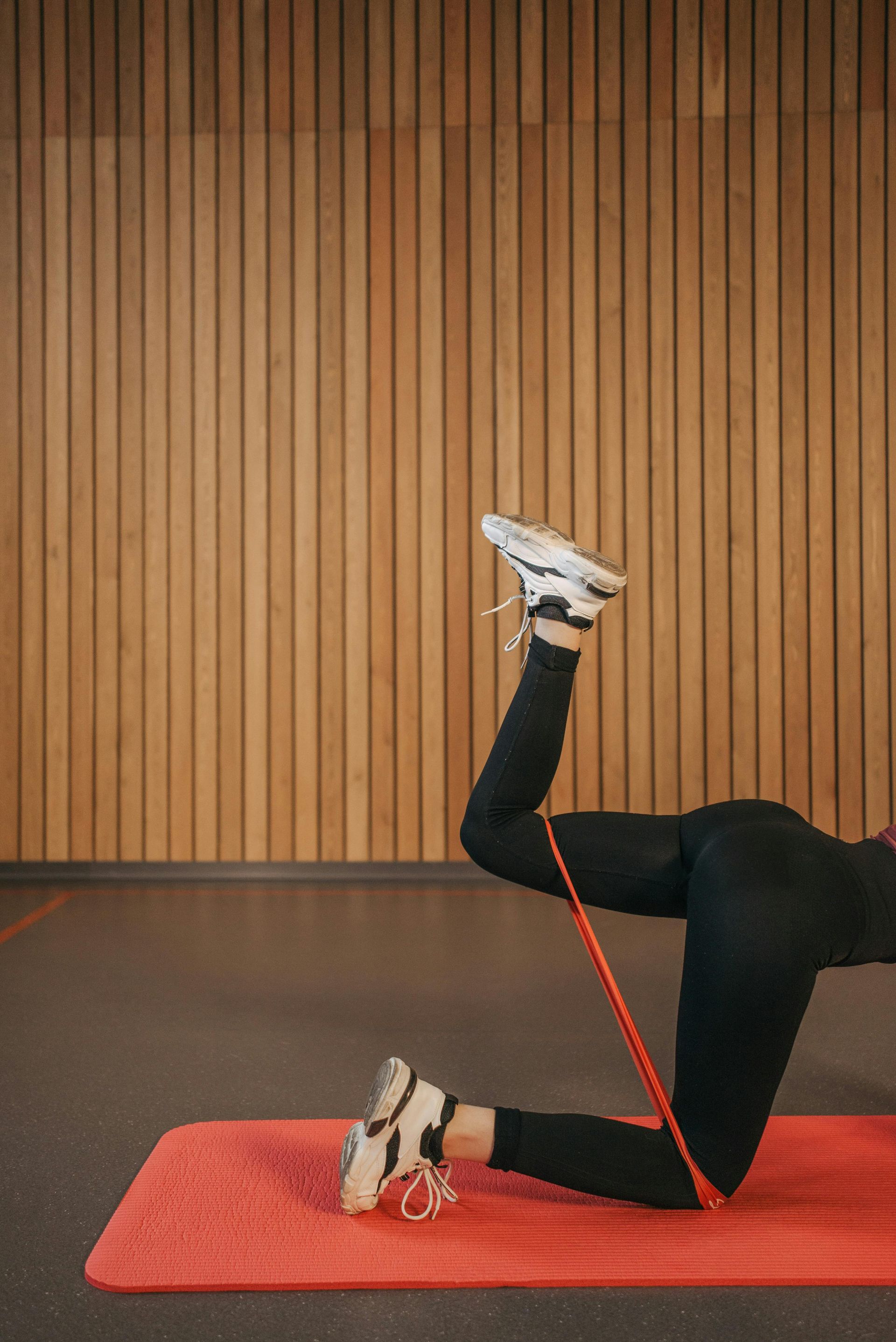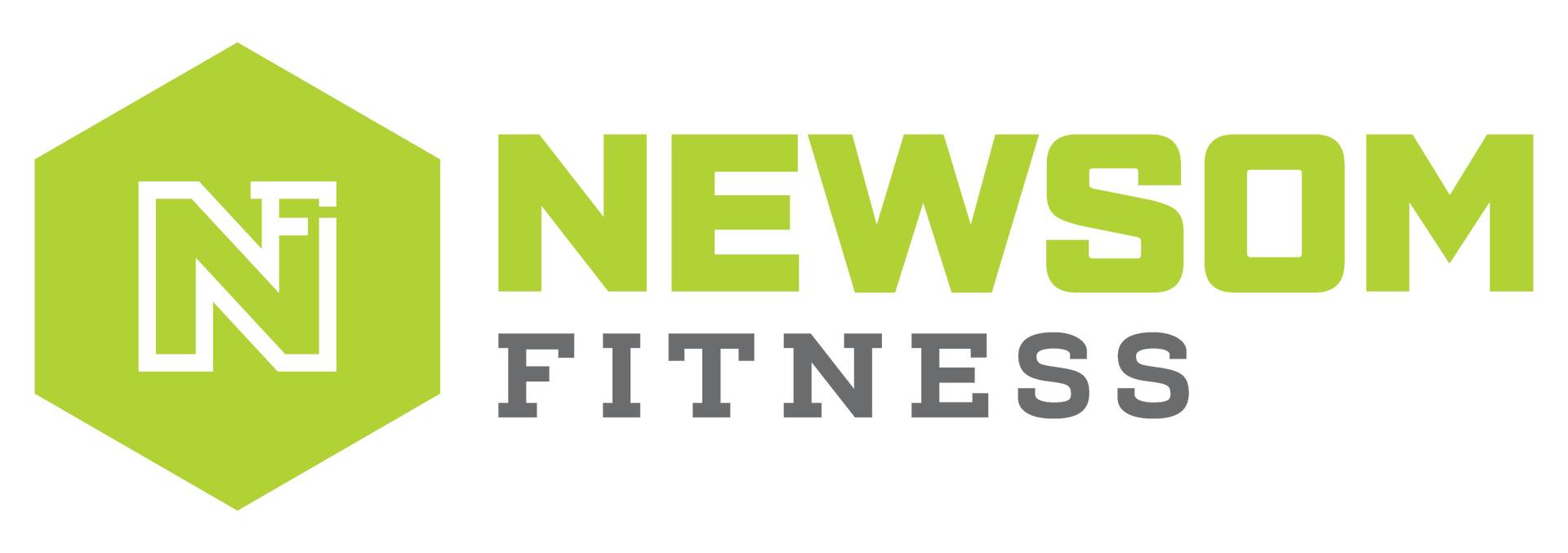The Importance of Breathing While Exercising: Mastering Your Breath for Better Performance
At Newsom Fitness, we believe that the simplest things can sometimes have the biggest impact, and this couldn’t be truer when it comes to breathing during exercise. Breathing is an automatic process that we rarely think about. However, during a workout, breathing becomes crucial for maximizing performance and ensuring the body gets the oxygen it needs.
Whether you're lifting weights, running, or practicing yoga, breathing properly is essential to help your muscles perform better, recover faster, and prevent injury. This blog will explore the science behind breathing during exercise, different breathing techniques for various activities, and how mastering your breath can make a noticeable difference in your fitness journey.
Why Proper Breathing During Exercise is Important
Understanding why proper breathing is important begins with knowing what happens inside your body every time you take a breath. Here's a breakdown of the process:
- Oxygen Intake: Your lungs bring in oxygen with every breath.
- Circulation: Oxygen is transferred to your bloodstream and circulated to your muscles, organs, and tissues.
- Energy Production: The oxygen helps convert nutrients into ATP (adenosine triphosphate), which fuels your muscles for movement and exertion.
In short, oxygen is your body’s fuel, and during exercise, your muscles need more of it to meet increased energy demands. Breathing efficiently ensures that your muscles get the oxygen they need to function properly, preventing early fatigue and promoting optimal performance.
Dr. Corbin Hedt, a physical therapist at Houston Methodist, explains: “When you exercise, your body’s need for oxygen increases because it’s working harder. Proper breathing ensures that enough oxygen reaches your organs and tissues, maintaining high performance levels and reducing the need for your body to overcompensate (hyperventilate) afterward to normalize these systems.”
The Consequences of Improper Breathing
Improper breathing during exercise can lead to several problems, from decreased performance to potential health risks. Let’s explore some of these consequences:
- Reduced Workout Performance: If your muscles aren’t getting enough oxygen, they fatigue faster. This can limit your stamina, making it harder to sustain high-intensity exercise or push through challenging workouts.
- Delayed Muscle Recovery: During exercise, your muscles produce lactic acid as a byproduct of energy production. Without proper oxygenation, lactic acid builds up, leading to muscle soreness and slower recovery times.
- Health Risks: Improper breathing can result in dizziness, lightheadedness, or even fainting. Those with respiratory or cardiovascular conditions need to be particularly careful, as poor breathing can exacerbate these issues during high-intensity workouts.
The Benefits of Proper Breathing
When you master the art of breathing during exercise, the benefits extend beyond your workout session. Let’s look at the key advantages of proper breathing:
1. Improved Endurance
Proper breathing ensures that your muscles receive a steady supply of oxygen, which allows them to work harder for longer periods. By delaying muscle fatigue, you’ll be able to sustain a higher intensity for a longer duration. Whether you’re running a marathon, cycling, or swimming, breathing properly can help you go the extra mile.
2. Better Mental Focus
Breathing plays a crucial role in maintaining mental focus and concentration. When you control your breath, you regulate your heart rate, which helps you stay calm and focused, particularly during high-intensity workouts or competitive sports. A consistent breathing rhythm helps ground you, allowing you to maintain proper form and avoid distractions.
3. Reduced Stress
Exercise is a stressor on the body, especially high-intensity workouts. However, controlled, deep breathing can lower cortisol levels (the body’s stress hormone) and engage your parasympathetic nervous system, which helps calm the body and mind. This can reduce the negative impact of stress and help you maintain a more relaxed state, even during challenging exercise.
4. Faster Recovery
Proper breathing isn’t just about performance—it’s also about recovery. Deep, efficient breathing helps your body remove waste products like carbon dioxide and lactic acid from your muscles more quickly, which reduces muscle soreness and accelerates recovery so you can be ready for your next workout sooner.
5. Injury Prevention
Breathing correctly helps stabilize your core, especially during exercises that require balance and coordination, such as weightlifting. Engaging your diaphragm while breathing deeply can protect your spine and reduce the risk of injury to your lower back, neck, and shoulders.
Different Breathing Techniques for Different Exercises
Breathing during exercise isn’t one-size-fits-all. The way you breathe depends on the type of activity you’re performing. At Newsom Fitness, we emphasize the importance of adapting your breathing technique to the demands of your workout. Let’s look at some breathing techniques for different types of exercise.
1. Breathing for Cardiovascular Exercises
Cardiovascular activities like running, swimming, or cycling require steady, rhythmic breathing to supply your muscles with a continuous flow of oxygen. Shallow, rapid breaths will make you feel out of breath quickly, while deep, controlled breaths will help keep you calm and increase endurance.
- Diaphragmatic Breathing: Also known as belly breathing, diaphragmatic breathing engages the diaphragm to allow deeper breaths and maximize oxygen intake. This type of breathing is especially helpful for endurance athletes.
How to do it: Place one hand on your chest and the other on your belly. Inhale deeply through your nose, allowing your belly to rise as you fill your lungs with air. Exhale slowly through your mouth, feeling your belly contract. Diaphragmatic breathing improves endurance and helps you remain calm during prolonged cardio sessions. - Breathing Rhythm for Running: A common breathing rhythm for running is the 2:2 pattern—inhaling for two steps and exhaling for two steps. This rhythmic breathing helps maintain a steady flow of oxygen and prevents overexertion. For high-intensity intervals, you can switch to a 2:1 or 1:1 rhythm to meet your body’s increased oxygen demands.
2. Breathing for Strength Training
Proper breathing during strength training is essential for both performance and safety. Holding your breath while lifting weights is a common mistake that can lead to increased blood pressure, dizziness, or even fainting.
- Exhale on Exertion: One of the most important breathing techniques in strength training is to exhale during the exertion phase—the hardest part of the movement. For example, when performing a squat, exhale as you push up to stand. During a bench press, exhale as you push the bar away from your chest.
Inhale on the Release: Inhale during the easier phase of the movement, such as when you’re lowering the weight or returning to the starting position. - Valsalva Maneuver (Advanced): This technique is often used by experienced lifters. It involves holding your breath briefly during heavy lifts to stabilize your core and protect your spine. However, this should be used cautiously, as holding your breath too long can elevate blood pressure and cause dizziness.
3. Breathing for Yoga and Pilates
Yoga and Pilates focus heavily on mindful breathing, incorporating it into every movement. Controlled breathing in these practices enhances concentration, flexibility, and core strength.
- Ujjayi Breathing (Yoga): Ujjayi, or “ocean breath,” involves taking deep, steady breaths through the nose while slightly constricting the back of the throat. This creates a soft “ocean” sound that helps regulate your breath and focus during yoga practice.
How to do it: Inhale deeply through your nose, filling your lungs completely. As you exhale, keep your mouth closed and constrict your throat slightly to create the ocean-like sound. This technique helps you maintain endurance and a calm mind during yoga sessions. - Pilates Breathing: In Pilates, lateral or ribcage breathing is emphasized. This involves expanding the ribs outward while keeping the core muscles engaged, ensuring that your muscles receive oxygen without compromising stability.
4. Breathing for High-Intensity Interval Training (HIIT)
HIIT workouts involve short bursts of intense activity followed by periods of rest or low-intensity recovery. During the high-intensity intervals, your body’s oxygen demand skyrockets, making deep, efficient breaths crucial.
- Inhale Deeply, Exhale Forcefully: During intense phases of HIIT, focus on taking deep, controlled breaths and exhaling forcefully to expel as much carbon dioxide as possible. This helps prevent early fatigue and maintains performance.
- Recovery Breathing: During the rest periods, focus on slow, deep breathing to help lower your heart rate and prepare for the next round of intense activity.
Common Breathing Mistakes to Avoid
At Newsom Fitness, we encourage our clients to be mindful of their breathing during workouts. Here are some common mistakes to avoid:
1. Shallow Breathing
Shallow, rapid breaths prevent your lungs from fully expanding and limit oxygen intake. This can cause early fatigue and shortness of breath during workouts.
2. Holding Your Breath
Holding your breath during heavy lifts or high-intensity exercise can increase blood pressure and lead to dizziness or fainting. Always exhale during the exertion phase of your movements.
3. Inconsistent Breathing
Inconsistent breathing patterns can disrupt your rhythm and make it difficult to maintain intensity during your workout. Establish a consistent pattern that matches the type of exercise you’re performing.
4. Breathing Too Quickly
It’s easy to fall into rapid, shallow breaths when pushing yourself during a tough workout, but this can lead to hyperventilation. Focus on taking deep, controlled breaths even when the workout gets intense.
Conclusion
Breathing is often overlooked in exercise, but it plays a critical role in how well you perform, how quickly you recover, and how you feel overall. At Newsom Fitness, we believe that mastering your breath can elevate your workouts and improve your fitness journey. Whether you're running, lifting weights, or practicing yoga, learning to breathe properly is a simple yet powerful way to optimize your performance and achieve your goals.
As Dr. Corbin Hedt puts it, “Our bodies rely on oxygen to function properly, and breathing is how we get that oxygen. During exercise, this becomes even more crucial as our bodies demand more oxygen.”
So next time you hit the gym, remember to focus on your breathing. With each controlled breath, you'll be taking a step toward better endurance, improved focus, reduced stress, and faster recovery. Newsom Fitness is here to support you in every breath you take on your fitness journey.




